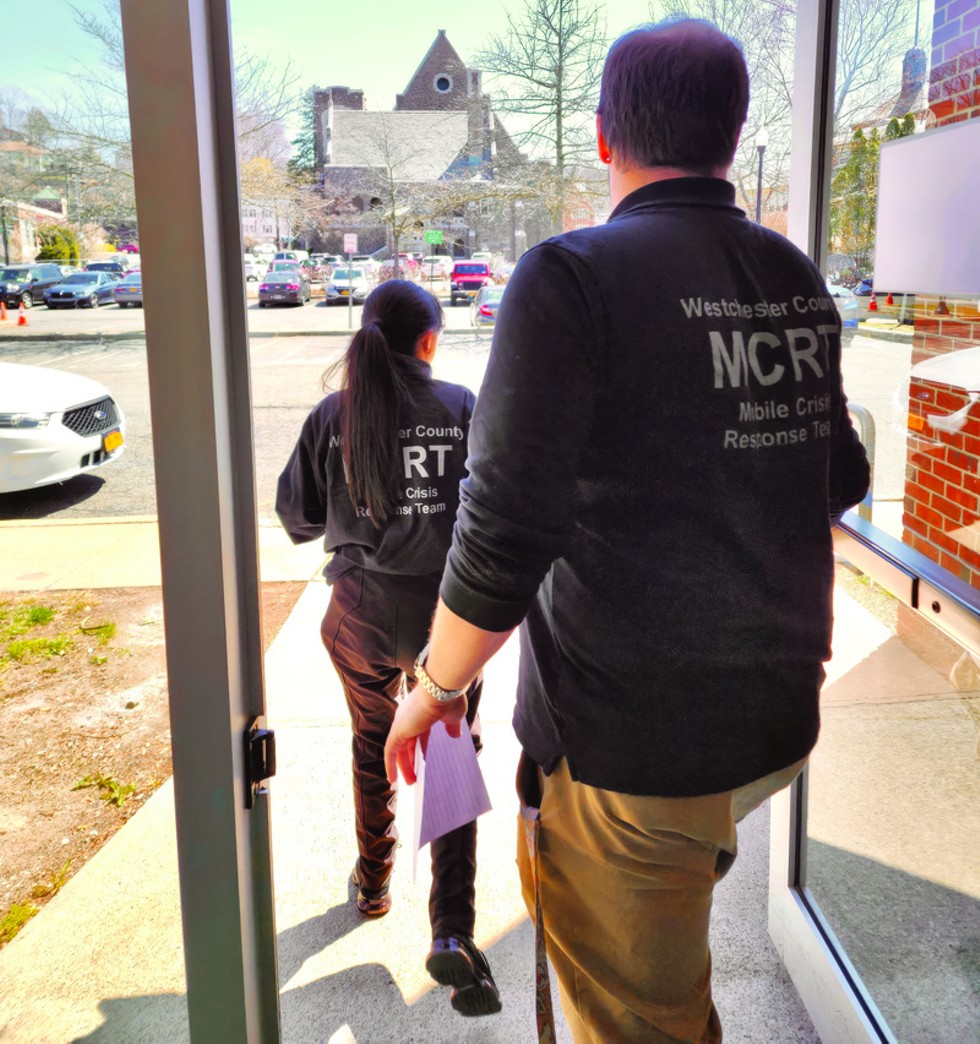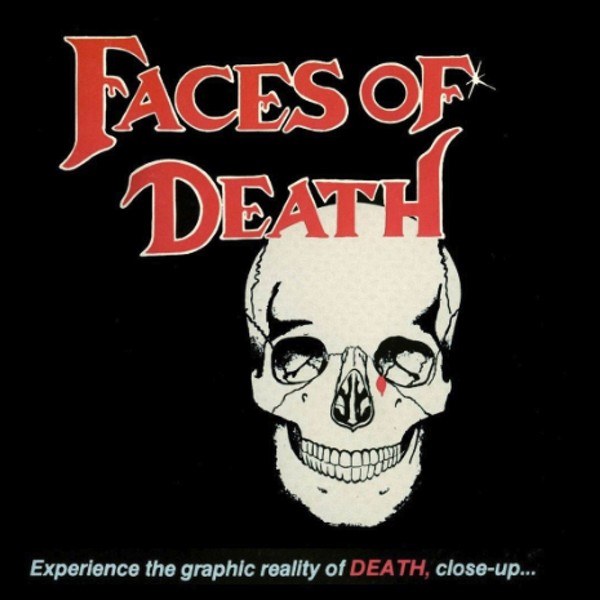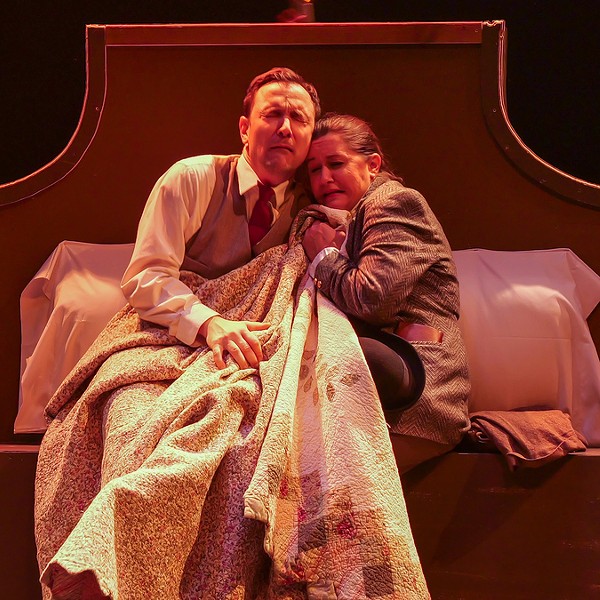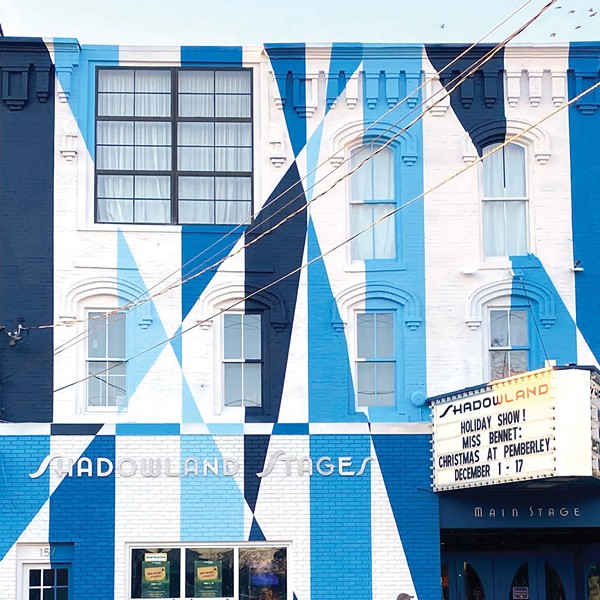A cramped hallway. A closed door to a stairwell. People calling to someone inside, trying to coax him out. “I don’t want to hurt anyone—please go away,” Daniel McAlpin, 41, calls through the door. It’s the evening of September 9, 2022, in his family home outside Ellenville.
Those outside had drawn guns—law enforcement officers had been called there to bring in McAlpin for a mental health evaluation, according to an October 2023 court filing. Now McAlpin was inside the stairwell wielding a knife. “Danny, we want to build trust with you,” calls an officer, according to videos released by the New York State Attorney General’s office. “I don’t want to build trust!” McAlpin yells back.
A second later an officer opens the stairwell door, and one shines a flashlight upstairs. McAlpin walks down with the knife. The police tase him but he keeps coming, and officers yell at him to drop the weapon. McAlpin reaches the main floor and emerges, appearing to swing the knife.
An officer fires five shots, and McAlpin falls. “We got him! We’re safe, everybody’s safe,” yells one police officer. Much is yet to be known: The state attorney general is investigating, and McAlpin’s parents are suing the officer who fired the shots that killed him.
McAlpin’s death was one of 104 police-involved shootings of someone in crisis nationwide in 2022. One study concludes that almost a quarter of police killings are mental health-related and that half of those happen in the person’s own home. Besides McAlpin, there have been at least two other police shootings of people with mental health issues since 2021 in the Hudson Valley. In the absence of a robust treatment system, police often function as front-line mental health workers, a role they didn’t sign up for.
Since George Floyd’s murder in May 2020, activists have insisted on an alternative to police in cases in which they say a badge and gun aren’t needed. The Ulster County-based grassroots group Rise Up Kingston, for example, demanded in its platform that police no longer be involved in mental health incidents, welfare checks, nonviolent crimes, car accidents, or evictions—22 percent of the city’s police dispatches in 2019 by the group’s count.
“We demand that 22 percent of the police budget go into a contingency account to allow the community to strategically decide how we should spend our dollars for public safety,” the platform reads. “In some communities, medics and mental health workers are dispatched to welfare checks, potential overdoses, and other situations which can best be handled by trained medical and mental health professionals.”
That’s one increasingly popular alternative: mobile mental health teams, clinicians paired with an emergency medical tech or peer caseworker—someone who’s been through their own struggles—to respond to people in crisis. They get people who are struggling into services that can help by using a range of tools: making a personal connection, respecting physical space, using sensory soothing techniques like blankets or smells, and more.
In CAHOOTS
Since 1989 in Eugene, Oregon, two-person teams including a crisis worker and a medic have responded instead of police to such incidents, a program called Crisis Assistance Helping Out on the Streets, or CAHOOTS. In 2019, CAHOOTS teams called for police backup in only 311, just over one percent, of about 24,000 calls they took on.
In the police reform discussions after Floyd’s killing, expectations ran high for mobile teams significantly cutting how often police respond to people in crisis. But around the country, and at least in the Hudson Valley’s most-populous county, police are still getting called in on the majority of these cases. And nowhere is there clear data yet showing that they’ve reduced the number of times police are deployed overall.
Much of what cops get asked to do makes it plain why clinicians and social workers should have been handling some of these situations to begin with. In Westchester County, a police reform task force recommended the creation of mobile crisis response teams in an April 2021 report, and a year later those teams were up and running.
“One of the reasons police are often called is because the mental health system is inadequate. We have to make it easier for people to get the services when they need them.” —Mark Giuliano, program director, Westchester County Department of Community Health
tweet this
Claire Hurst and David Warnock have served on some of those. Both are mental health professionals with Family Services of Westchester, which is contracted to run some of the county’s mobile teams. One of the agency’s first calls was to check on a woman camped out with her dog in her car in a parking lot in Port Chester. She’d been there several days, and neighbors had called police, who called in a mobile team. She was from Ohio and had gotten stranded with no money.
The responders got her to an overnight shelter, contacted her family in Ohio, bought her a bus ticket, and made sure someone would be on the other end to meet her.
There are riskier calls too. In January, a 17-year-old student had a knife in school and was threatening suicide, says Warnock. Police got there first and convinced him to give up the weapon. Then the mobile crisis team stepped in to get him to the hospital for an evaluation.
“We accompanied him there,” says Warnock. “We offered him support while he was waiting for family to arrive. And we provided as much background information as we could to the psychiatric team before they did the evaluation.” There’s no formula in these situations: it’s all about making a connection, he says. Team members sit with people for as long as needed—sometimes an entire eight-hour shift—and then stay involved for up to two weeks afterward, hooking them up with outpatient clinics or other services, he says.
Alternatives to Police Responses
In Ulster County, mobile teams date back to 2014, after the state closed the Hudson River Psychiatric Center. To compensate, it gave affected counties the funds to design their own mental health services. Ulster chose mobile teams as a way to ramp up prevention, keeping people out of psychiatric wards in the first place, says Tara McDonald, Ulster County Commissioner of Mental Health. “Their main purpose was to reduce unnecessary psychiatric emergency visits and any unnecessary psychiatric hospitalizations,” says McDonald. Now, less than 15 percent of people the mobile teams contact end up going to the hospital, she says.
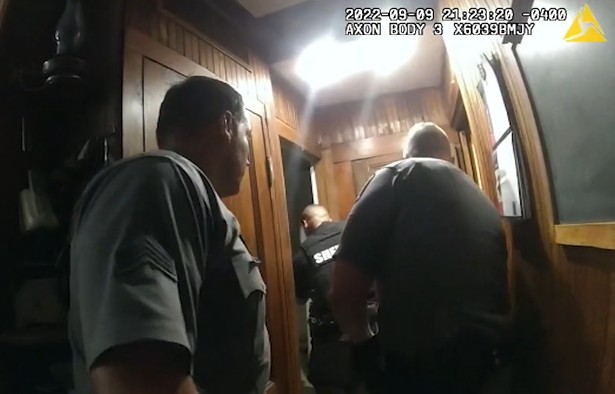
The Ulster mobile teams made a difference for Barbara Hill and her brother. Hill’s brother has schizophrenia, and in September 2020 he’d gone off his medication, which Hill figured out on a visit to his apartment. In the past, those episodes had ended in trips to the hospital and worse, so she called a mobile team, which called her brother and convinced him to restart his pills. Before mobile teams, that might have turned into police being dispatched, says Hill, a former Kingston alderwoman and a member of the Ulster County Community Services Board.
Both Hill and her brother now have refrigerator magnets with the mobile team phone number. “That’s very positive because it’s like a guardrail now. If he goes off his meds, I’m calling them,” she says.
It’s the type of situation indicating that mobile teams don’t just respond to crises but prevent them. That shows up in the numbers: In 2023 Ulster County teams had about 1,300 face-to-face contacts with people in crisis but made just over 3,000 contacts by phone only, says McDonald. Often the phone contacts are people calling for advice or finding out where they can go for services should they need them, she says.
Orange County’s mobile teams have been running since 1991, nearly as long as the CAHOOTS model that’s drawn so much national attention. Still, until 2019 police were still dealing with a lot of mental health calls and were frustrated. “They’d call and say, ‘Listen, we went to see Mr. Jones. It’s our 10th time out there. We bring him to the hospital, he ends up right back in the community,’” says Darcie Miller, county Commissioner of Social Services and Mental Health.
So in 2019 the county consolidated five separate help lines into a single 311 crisis center number. Today about 4,000 annual calls come into 911 and get diverted to the 311 number, ending up with mobile teams responding face to face. Only 5 to 10 percent of those require any police backup, says Miller.
In all three counties, mobile teams have dramatically improved the quality of help that people get, say proponents. Before Westchester County’s mobile teams, if someone called in feeling suicidal, a police car and ambulance would immediately get sent, says Mark Giuliano, program director at the county’s Department of Community Health. “Odds are, I’d be forcibly extricated from my house and dragged out to the hospital, where I may or may not meet the criteria for admission. That was our one-size-fits-all model,” he says.
But another promise of mobile teams hasn’t materialized—that they’d dramatically cut the number of calls on which police get dispatched. Even CAHOOTS, held up as a national model, diverts just three to eight percent of police deployments, meaning 92 to 97 percent of calls still get a police response. The police diversion rate isn’t tracked at all in Westchester, Orange, or Ulster Counties, according to the mental health commissioners in all three. (Miller referred the question to the Police Chiefs’ Association of Orange County, which didn’t respond to inquiries.)
A Call for Transparency
Westchester County’s system has improved dramatically since mobile teams started. In 2023, they responded to almost 2,500 calls for service, according to the county. “That’s people going through a crisis in which response teams went out—that’s fantastic,” says Patrick Schelle, steering committee member for the Westchester Coalition for Police Reform. “That starts to bring that percentage rate down of how many times the police have to respond to mental health emergencies.”
But he also sees loopholes. The most important is that because calls get routed through police dispatch, there’s no way for someone who doesn’t want cops involved to get a mobile team sent out instead, he says.
The July 2023 police shooting of Jerrell Garris in New Rochelle makes him question how the system is working. Garris, who had a known history of mental health problems, had gone to a store and eaten food he didn’t pay for. When officers showed up to arrest him, he resisted. After one of them called out that Garris had a gun—he had his hand on an officer’s holster, a video seems to show—one shot him in the neck, and he died days later. New Rochelle has had a mobile crisis response team deployed since August 2022. “How come when that 911 call went through, [the team] wasn’t dispatched?” asks Schelle.
Schelle would also like to see more regular public sharing of outcome data on the mobile teams’ effectiveness, like average response times. Those averages are important: his and the coalition’s research shows that the longer the lag between police contact with someone and a crisis team arriving, the more likely a violent confrontation will happen, he says. Those numbers “would show us some of the effectiveness of the implementation,” says Schelle. “I think that’s a very big loophole.”
Cases like McAlpin’s—in which someone in crisis wields a weapon—are rare, say mental health advocates: people with a psychiatric illness are more likely to be the victim than the perpetrator of a crime.
More access to care would make them rarer still, say area mental health professionals. Giuliano says that, aside from mobile teams, Westchester is launching several initiatives to get people help without a visit to a hospital psychiatric ward. “One of the reasons police are often called is because the mental health system is inadequate,” he says. “We have to make it easier for people to get the services when they need them.”







